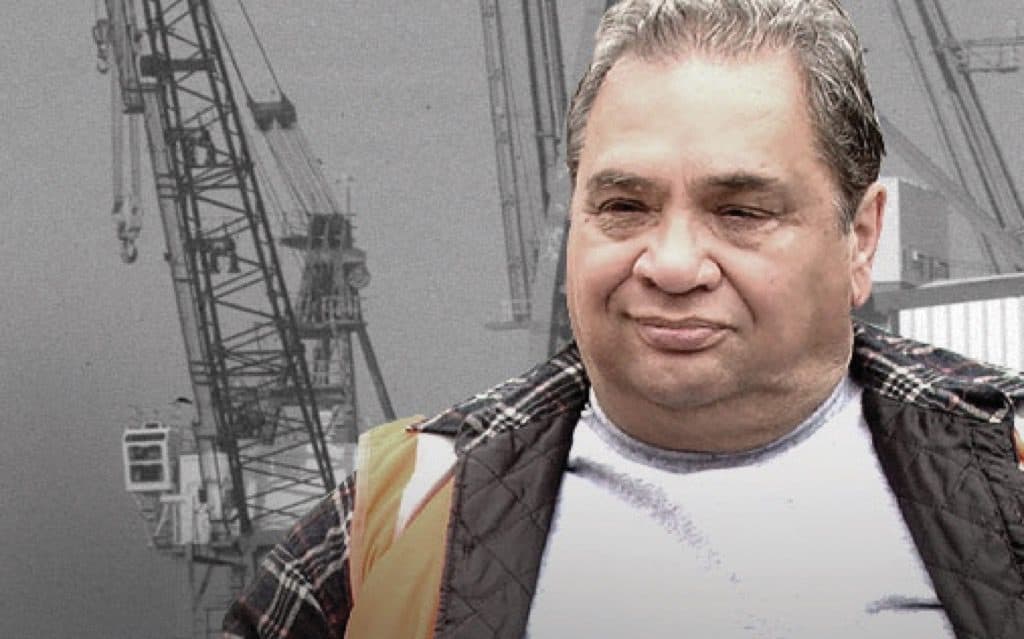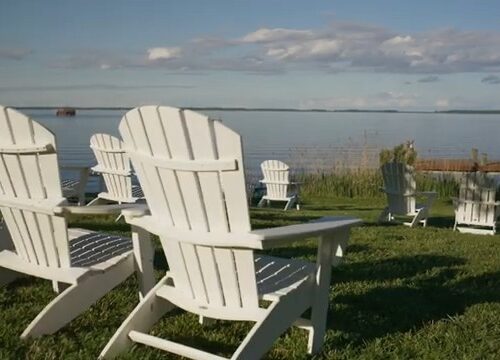The Baltimore stevedores who inspired The Wire
I had a brief glimpse of Fells Point—known to earlier generations as “the foot of Broadway”—in its last days as a true seafaring village. Rag and rope shops. Union halls. Street drunks lining up at the Port Mission for a bowl of soup and a slice of bread, and boarding houses.
It was the mid-1960s, just before the hippies arrived, unwittingly launching a gentrification that is now complete.
At one of the first Fells Point festivals when I was 11-years-old, I spotted someone I was pretty sure was a man but was gussied up as a woman: draped in a muumuu, garish make-up, costume jewelry and as big around as my Polish grandmother’s lady friends. The object of my fascination was having a great time, drinking and laughing with a cool-looking entourage in front of the Recreation Pier where the tugboats docked.
When Mom caught me staring, concerned perhaps that I would skip on over to say hello, she pulled me back and told me to stay put. Twenty years later, without ever having said that hello, I filed a story about the funeral of the person who had so entranced me: Harris Glenn Milstead, known around the world as Divine.
My father worked those tugs and our family’s closest friends, the Garayoa/Karcz family, owned a saloon at 805 South Broadway. We were in the neighborhood all the time; ate paella at a Spanish restaurant called Corral’s and watched the locals—daredevils and roughnecks unlike the kids in the suburbs—play football in the square when it was a parking lot.
Sometimes, my brother Danny and I would go with our father to his favorite gin mill, Zeppie’s, at the corner of Ann and Thames, to drink Coca-Cola and eat 15-cent bags of Wise potato chips near the shuffleboard table while he enjoyed a few cold ones, “shooting the breeze” with friends at the bar.
Their conversation was always the same: Ships. The docking of ships, the loading of ships (unloading them was an art in itself, if you were in the market for a hot radio), and who was an ace at their job, and which unlucky son-of-a-bitch was the most recent to lose a finger on the job.
It was these men—stevedores, deckhands, cooks, drunks, line handlers, family men, captains and thieves—on whom I based some of the waterfront characters in The Wire when David Simon invited me to join the writing staff in 2002.
They bore names and nicknames that could easily be swapped out for the fictional laborers representing the milieu on screen: Lukowski and Machlinski; Pinhead, Joe Blow and Ronnie Rotten Crotch; Romey and Frenchie.
I took a little bit from each to infuse the “I play-one-on-TV” stevedores with enough Old Bay and National Boh to make them believable; perhaps best shown in the garrulous opening of season two at Delores’ bar, Clement and Jackon streets in Federal Hill. You might remember it as the scene where Ziggy the Goof engages in some very personal advertising.
As Zeppie’s has not been Zeppies for two generations, the tavern that portrayed Delores’ is now—just like Miss Bonnie’s Elvis Bar on the eastside—a private home.
Of all of Frank Sobotka’s crew (“Frank” from the father of a Polish friend of mine, “Sobotka” taken from a tombstone in Dundalk) the longshoreman closest to my heart was Horseface Pakusa.
Horseface—“Horse” to his peers—was played by the now 79-year-old Charley Scalies of Philadelphia, the city 100 miles northeast of Crabtown where the local patois comes closest to approximating English as it is mangled on the shores of the Patapsco.
“I’m a good actor,” Scalies once told a Philly reporter. “I can sweat on cue.”
Perfectly cast (“I just play myself,” he said) Scalies looks like a stevedore, talks like a stevedore, walks like a stevedore and, in all the best ways, doesn’t give a shit like a stevedore. The eye deceives and fiction amplifies.
“The only time I have even been on the docks is when I worked on The Wire,” said Scalies, who grew up in a South Philly poolroom owned by his father at 1526 Reed Street. “And the only time I even met a stevedore was shortly after I was cast as Horseface.”
One day, he said, he and his wife of 56 years, the former Angeline Cardamone, were having lunch near the Philadelphia waterfront. At the next table were a half-dozen or so stevedores and International Longshoremen’s Association union reps.
“I told them I had just been cast as a union “checker” on a TV show,” remembered Scalies. “Their response was immediate and unanimous: ‘He looks like a checker!’”
An industrial sales manager and consultant who tried his hand at acting in the 1980s just for the hell of it (he also played Tony Soprano’s high school wrestling coach on that other HBO drama), Scalies said the stevedores he met in Baltimore, where ships have been loaded and unloaded since the founding of Fells Point in the mid-18th century, were no different from the men he knew growing up in South Philadelphia.
“Blue-collar, hard-working, no BS, irreverent and very funny,” he said. “My father’s favorite line was, ‘When I graduated from the second grade, I was so nervous I couldn’t shave.”
Charley’s old man, “Chappie,” was also known to host high-stakes poker games in the basement of his poolroom and thus was not unknown to police or men who drove trucks, filled potholes, made spaghetti sauce, and unloaded ships.
In Fells Point, one of the big wheels in the ILA was the bookie for half the merchants at the Broadway Market, back when you could have a butcher cut pork chops just the way you liked them or order a hot dog and milkshake from the sidewalk.
I vividly remember being all of seven-years-old and playing Beatles’ singles (I Saw Her Standing There stands out) on the jukebox at Karcz’s Cafe, which by then was only open to people the owners knew.
Simone Garayoa—the Basque from Bilbao who worked with my father on the Baker-Whiteley Towing Company tugs and was married to Agnes Karcz who grew up at 805 South Broadway—sometimes asked me and Danny to pick numbers. Any number with three digits. We did—it felt fun and important—and Mr. Simone, with his big, warm smile jotted them down on a napkin.
We were never told what the numbers were for any more than I was able to fathom whether Divine was a man or a woman. But I knew it was an integral part of life along South Broadway not present along the manicured lawns of Linthicum Heights where my father’s union wage allowed him and Mom a quarter-acre of the American Dream.
I remembered all of it when I sat down to conjure men who used wooden shovels—Horseface Pakusa prime among them—to unload steel hulls heavy with grain because the spark from a metal shovel would go ka-boom.
“As with all the other characters I’ve been blessed to portray, Horseface lives inside of me,” said Scalies. “I invite him out to play as needed.”



